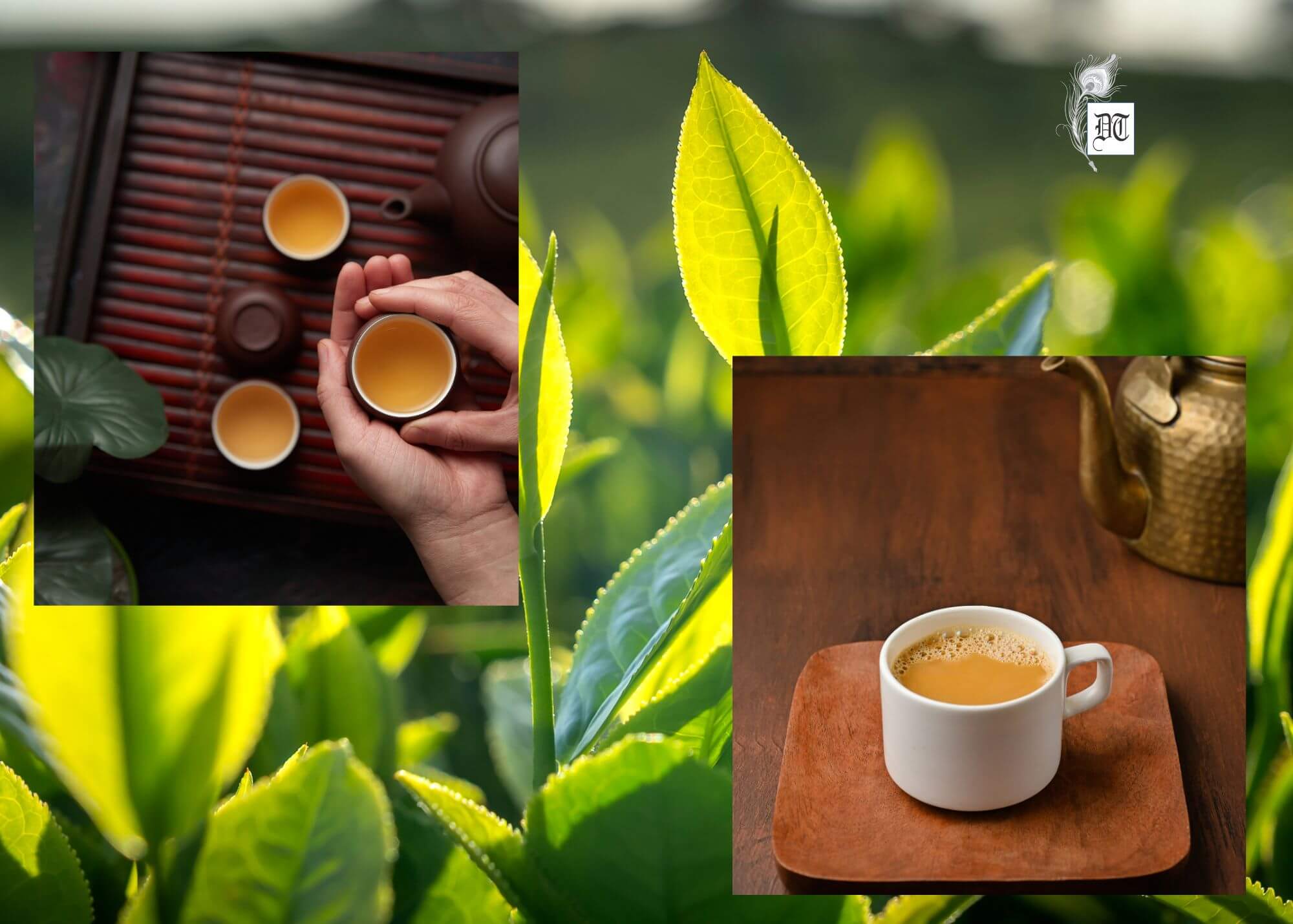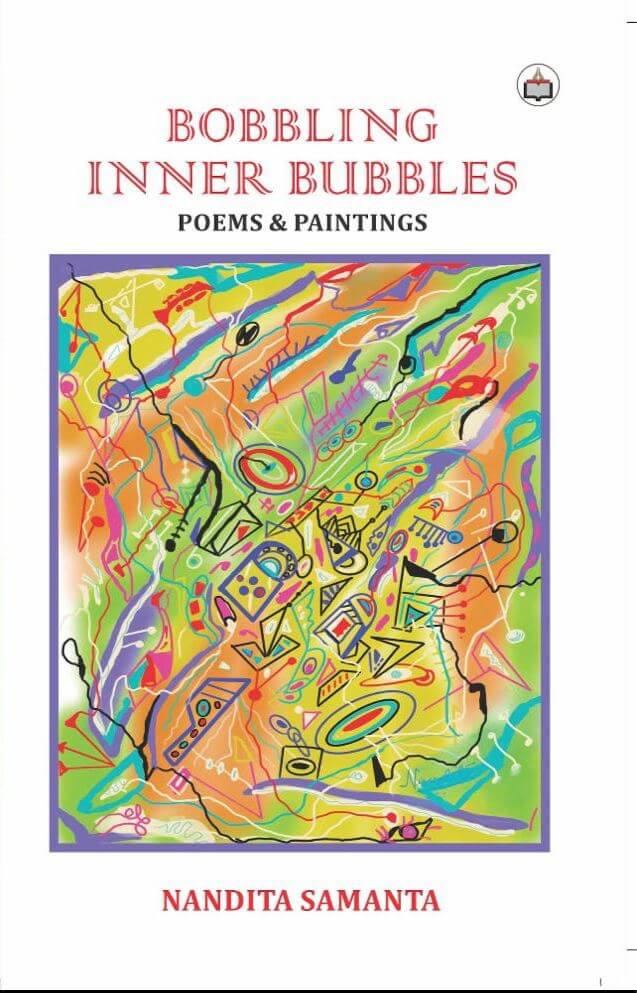Ruchira explores the rich history of tea, from ancient Chinese origins to India’s bustling tea stalls, showcasing its enduring and global appeal, exclusively for Different Truths.

In the early years of civilisation, a beverage was discovered, which the world now hails as tea. Legends say way back in 2737 BC, a Chinese emperor Shennong sat beneath a bush drinking boiled water before a meal when some leaves from the bush blew into the water. Shennnong tried the concoction and was surprised by its flavour and healthy properties. He labelled it Cha (Chinese: check or investigate).
From that hoary past, tea has made its way to almost every corner of the globe, with explorers, travellers, and traders as enthusiastic careers. Again, to give the devil his due, it was the British colonials who introduced tea as a commodity on the sprawling subcontinent. To them also goes the credit of establishing the numerous flourishing tea estates located in the northeastern region of the country. India figures among the major players in the global tea market.
With the passing of the years, tea as a beverage in India has undergone a massive transformation. It has lost its pedigree—that classy touch that prevailed in an earlier era. The flagship of Indian tea is ‘Darjeeling’ noted for its floral (often fruity) aroma and thin, light coloured leaves. Its colour may vary from golden or bronze to lemon or amber depending on how it is brewed. Ideally paired with honey. On the second rung, Assam tea is marked by long dark black leaves, a reddish-brown hue and a strong, rich, and pleasant flavour.
Chai Permeated the Grassroots
As Chai permeated the grassroots of society, people who were unable to afford the high-class stuff came up with a new idea: blending tea dust with whole-leaf tea. Sure, enough for the aam aadmi (commoners), it proves to be highly economical but compromises with ‘flavour’—the’ star attraction of tea.
We have Chai for every occasion—from ‘All time is tea time’: from the early morning bed tea to tea with breakfast to mid-morning tea, Chai par chacha (discussions over tea), to High Tea, the list is long.
Like it or not, the masses appear satisfied with a strong liqueur and mild aroma. The average people have moved further to improvise the ‘Kadak’ (strong) version: dark brown liquid with a slightly spicy taste, and minimal milk. The quantity of sugar may vary though I find it too sweet for my liking. As a matter of fact, ‘Kadak’ is very much the ‘in thing’. A splitting headache? Have a cup of Kadak. Break between arguments and brainstorming sessions, or cure for irregular bowel movement trust Kadak to come to your rescue.
Much Sweetened Tea
Personally, a common practice, which I find irritating, is the humongous amount of sugar that finds its way into a cuppa tea. I was often horrified to observe my friends, acquaintances (or anybody else) throwing heaped spoons of sugar into a pan of boiling water, the tea leaves going in next, and lastly the milk. The final product was a close cousin of the sherbet, the iconic coolant summer drink.
When I serve tea to guests at home, I skip adding sugar to the brew and include a sugar bowl on the tea tray instead.
Wayside Tea Stalls
Look at the average wayside tea stalls that flourish in almost every nook and corner. They are notorious for changing tea leaves rarely, instead of frequently. Milk and sugar are added intermittently, as and when the customers arrive. Discerning individuals will understand how unscientific and unhealthy the procedure is.
Another recent phenomenon is the debut of masala chai. Honestly, it’s not “my cup of tea” because of the excess of milk and sugar; moreover, the aroma of the original brew gets muted by the spices.
Apart from sugar, ginger is also a sine qua non for desi chai. At any time of the year, but particularly in winter, tea makers beam with joy while serving adrak wali chai to the people around them. They seldom bother to find out whether or not someone might prefer gingerless tea.
Kashmiri Kahwa
I must mention that I prefer Kashmiri ‘Kahwa’ because of its light content. Unlike masala chai, the spices can be set aside, and the brew sipped while enjoying the subtle fragrance.
On the other hand, ‘Iced’ tea in myriad flavours fare much better, though its consumers are largely confined to the financially comfortable urban populace.
Fortunately, ‘Green’ tea has managed to retain its pristine characteristics. It is mandatorily drunk plain without being suffused with milk and sugar. Once, a guest of mine was disgruntled, since I had served green tea with neither sugar nor honey.
Many Varieties of Tea
Other variations of the tea are Cutting Chai. In Mumbai, it’s No. 12, 23, 34, etc.; the first digit is the number of cups ordered, while the second digit is to split it into those many cups. Masala Chai (spicy tea), Tusli Cha (with Holy Basil leaves), and Jasmine Tea are other varieties. Amongst Bengalis, the popular ones are Lebu Cha (lemon tea), Lal Cha (raw tea or just the liqueur), Rong Cha (different kinds of Lal Cha with various spices and a dash of lemon juice), et al.
Owing to its health benefits, Green Tea’s popularity is soaring at lightning speed. For almost a decade now, I have been regularly drinking Green Tea, which has been very helpful in weight control. We also have White Tea, Green Tea, and Black Tea. Whether it’s the subtle sweetness of White Tea, the earthy undertones of Green Tea, or the full-bodied richness of Black Tea, each variety offers a distinctive taste sensation.
Well, these are merely random musings, interspersed with a few real-life experiences. No aspersions on the tea lovers’ choices. After all, an adage goes, “to each his own.”
Picture design by Anumita Roy






 By
By
 By
By
 By
By